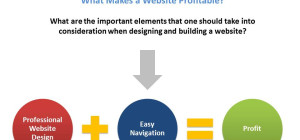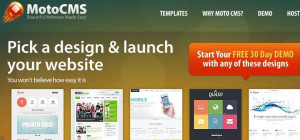Need to get a UX design job but have zero experience? No problem! Landing a UX job without years of professional expertise is something that seems tricky initially. But you don’t want to give up just like that, do you?
Whoever has tons of experience in UX designing at a web development agency is probably a top-dollar earner, but there’s one thing you, as a beginner, should bear in mind – experts also need to take the struggle of the first step. Everyone has to start out somewhere, so don’t worry about having to have years of experience to snag your first job. Read on and discover how to get hired as a UX designer, even if you are a complete beginner.

Getting Hired
More and more businesses are realizing the importance of UX for their online conversions, and consequently there are other B2B employers looking to meet their needs with their team’s capabilities. Regardless of what industry you are in, you need a lot of preparation to start with if you want to apply for such a position. So before sending out a UX job application, get everything ready. Understand who your target employer will be. How do you start on preparation the first time? I’ll give you some tips. (I assume that you already have basic knowledge of what a UX designer is. If you don’t, then forget it. You have zero possibility of getting hired.)
Tip # 1: Build a portfolio.
Building a portfolio when you don’t even have a single job under your belt seems pretty intimidating, doesn’t it? Well, it is possible. A portfolio is one of the most important things you will need in order to get hired and with the help of one, you can break into the UX field without prior UX job experience.
Now let’s build your portfolio. All you need to do is to stop thinking you have no experience. This is one reason why most novices never get anywhere. Think about projects you’ve made in the past. You have likely encountered User Experience design processes already and can use those to show your abilities.
UX Design Elements from prior projects can include:
- Brainstorming or ideation
- Research
- Design or solution implementation
- Validation
- Testing the solutions
Most jobs and projects in different industries today have these or other elements, such as market research, business process modeling, data validating, Quality Assurance (QA) and more are some other names. So you actually have experience, don’t get me wrong.
Check the work you’ve already done and see how you can turn them into UX portfolio pieces. You can form your existing experience into those relevant project examples and that is how you can make a portfolio come to life. It is a good idea to ensure your portfolio is accessible online. You can use a free portfolio hosting site such as Behance or you can put together your own website, with a domain name that includes your name in it. Having your work visible online is not only professional, but incredibly convenient for prospective employers.
Tip # 2: Consider an internship.
The competition for UX designers is growing. How do you prevent getting left behind? One great way to stay in the loop is to get an internship. People who already have done this in college or already have plenty of job experience can skip this step. For those who haven’t, an internship can be a great place to start.
Internship Benefits
- Offers actual job exposure
- Shows how the UX design industry really works
- Provides an easier transition to a full-time position
- Gives school-to-job skill application
If you want to understand the roles and duties of your position deeply, consider an internship. It can also change the working expectations and assumptions you may have in mind. Since you can make mistakes while you’re involved in it, you can learn better tricks on how to possibly avoid them in the real UX design world.
An internship can help novices prepare themselves in the field considerably. From finding a job to the interview process, a strong groundwork is important for your success. Getting an internship won’t kill you but getting fired when you’re not even yet hired will shoot you dead.
Tip # 3: Showcase your skills with a Resume and Cover Letter
All of us are born with hidden skills. Feel like you don’t have any? Chances are you do. Show the world what you’ve got and let hiring managers see you have something better. Since most of them are busy people that they can’t listen to the full story of your life, express it briefly in your resume. Anyone who has never worked as a UX designer can fill it out too.
Resume
A resume and a portfolio are two different things. Don’t mix them up. A resume speaks a broader overview of you – your projects, your skills, your qualifications and everything you can offer. A portfolio, on the other hand, is just all about your past jobs and experiences (completed or not) that give your resume strong backup.
In making an impressive resume, try to show how relevant past jobs shaped you in the current position you’re applying for even if they aren’t done in a professional way. Describe your role in it; also include skills, awards and any other accomplishments you’ve got. Show employers why a beginner like you should be hired.
Cover Letter
Done making a killer resume? Now is the time to tell your story. A cover letter shows something your resume does not. A great cover letter should convince the employer. Tell them why they should hire you. Show how your past designs match the job qualifications they are looking for.
A cover letter is a great way to show why you are a perfect fit for the job. Don’t be shy to show off your skills. Take the letter seriously. It can ruin your entire application if you don’t put effort into it.
Tip # 4: Identify your role correctly
If there’s a job opening for experienced UX designers with years of experience in the field and there’s a little dummy applying for it, will he/she be hired for the position? Probably not!
But don’t lose heart – there’s a 20% chance to win, if you put enough effort into showing your potential up front. Some employers consider hiring fresh applicants if they see they can do the job very well. If beginners offer something great for the company and make an impressive resume then they can get the job without much experience.
Don’t smile like that, there’s only a 20% chance. Lucky is the one who gets in like that. If you want to be seen in the thousands of UX design applications, identify your role appropriately. Unless you are an expert, look for UX design positions in junior or beginner level. You will need to start out walking humbly before you can jump. Beginners need to carve a strong job background and this is a great way to do so.
UX Design Descriptions:
- Product Approach
- Wireframing
- Viable Analysis and Tracking
- Prototyping
- User-centered design
- Information Architecture
If you ever come across job postings that say “Looking for a UI/UX Designer,” watch out for that. The role is either UI or UX or both. If you know nothing about UI, reserve your application. Since UX design is a new field, some employers may don’t also know the difference so get it clarified.
Always lean towards UX jobs you feel like you can handle without feeling in over your head. As the saying goes, don’t bite off more than you can chew. Don’t be afraid to start small and work your way up from there.
Tip # 5: Set up connections.
Take courage and build a network. Beginners need help, you have to understand that. No one can easily do the job alone, so build connections! Find any UX networking events in your area or spend some clicks online researching to discover them. Talk to other designers. Search for people who may be able to refer you. Don’t close the door for recruiters. They can be your friend.
You have friends, family, and professors can help you land the job. They can give you tips and tricks, too. Don’t forget to include them in your network. Most first-time applicants nowadays have a LinkedIn account to showcase skills and experiences while building connections – why won’t you give it a try?
The Bottom Line
Getting hired as a UX designer for the first time neither depends on other designers who give you help nor the employers who offer jobs, it’s all about you – your skills, your courage and your preparation.
How do you win the UX design job as a beginner? The 5 tips above can be your weapon. So get off the ground and make a name on your career path!







